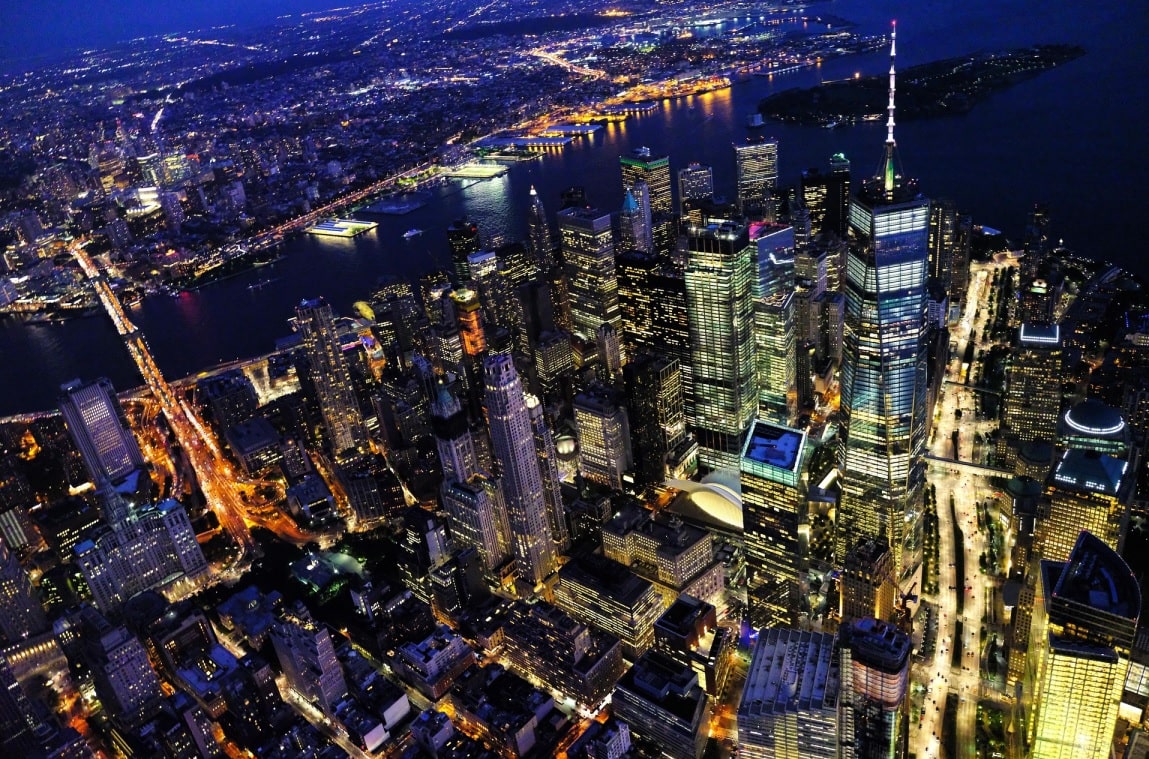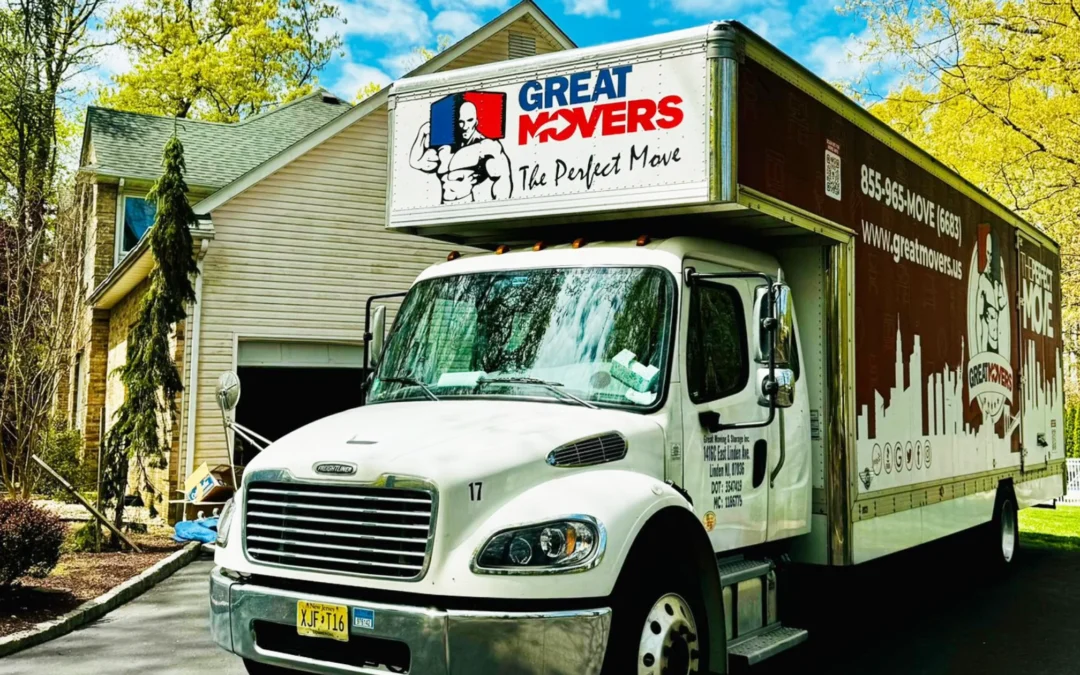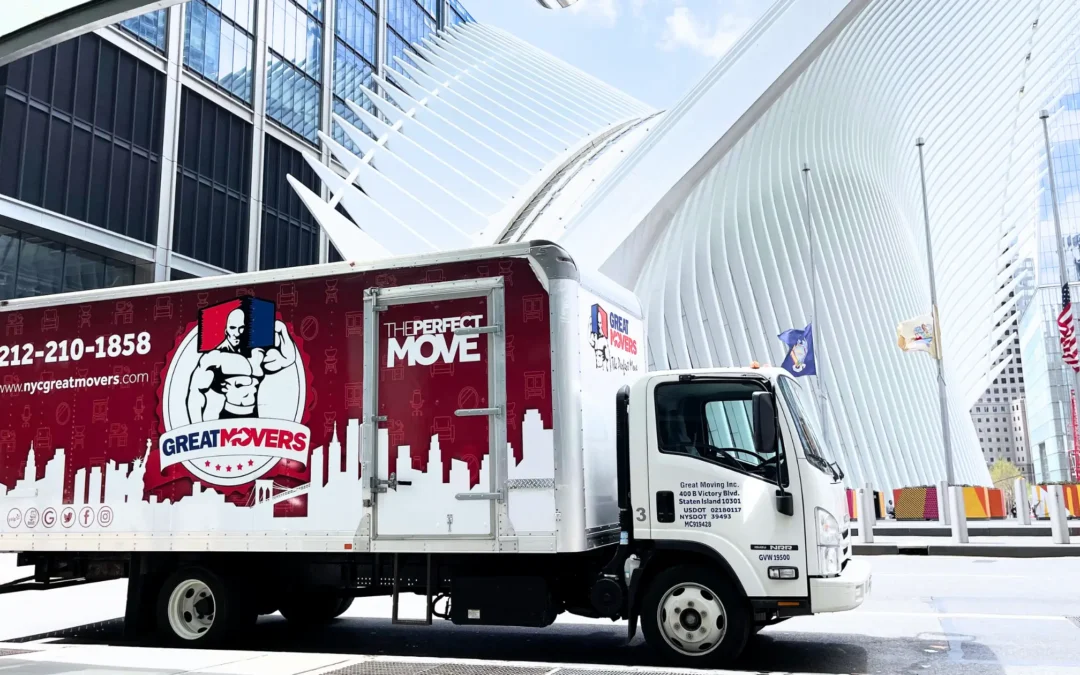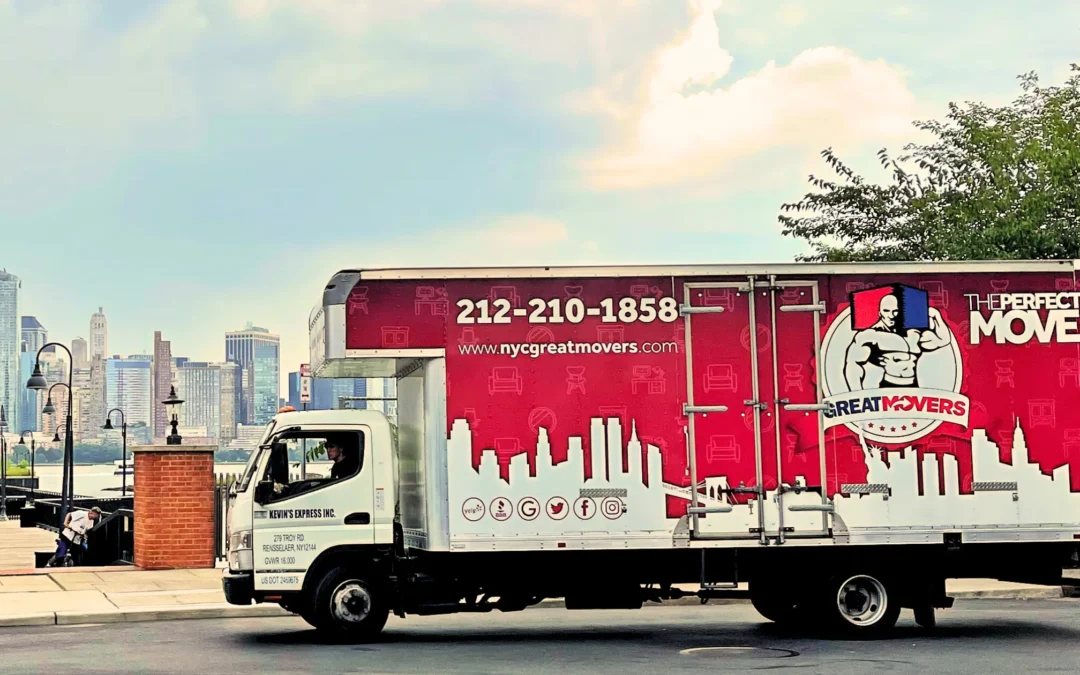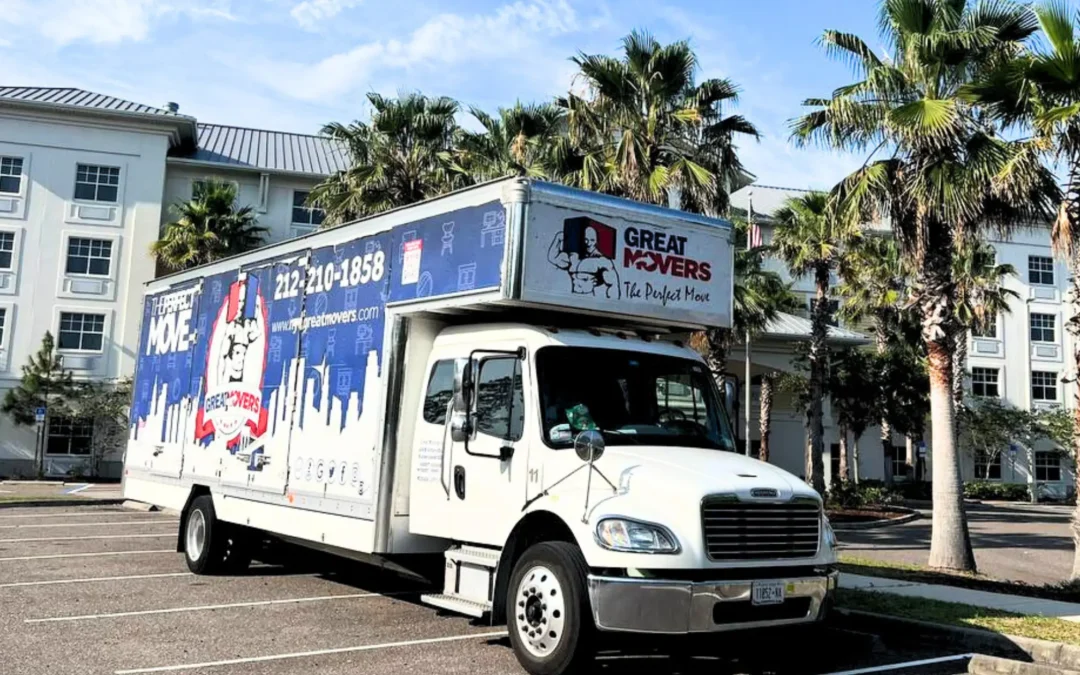Whether you are moving to NYC from a different state or a new borough, it is not a simple process. While around 5.3 percent of the population might have moved out of the city between 2020 to 2022, the city’s population has continued to grow, though at a slower pace than before. Despite sky high rents, people continue to move to NYC for a variety of reasons such as more job opportunities, ease of access, and world-class dining and nightlife.
Thousands of people move to NYC every year in the hopes of better opportunities. However, NYC is not for the faint of heart and it’s not the best place to move on a whim. You really need to understand and plan out your move before you make the jump. The more research and preparation you do beforehand, the easier your move. Below are a few things you should understand before moving:
Cost of Living
There’s a lot to consider when moving to NYC, and finances should be at the top of your list. NYC isn’t cheap. In fact, in 2023 NYC was named the most expensive city in the United States. That doesn’t mean you have to be rich to enjoy the city, but it probably means you do need to make some concessions if you’re working a low paying job. So where will most of your money go? Well, most likely:
- Rent – the average rent for a one bedroom apartment is around $4,000 while a two bedroom is around $4,500. You can, of course, find more affordable options in different boroughs. And if you want to save money, you can move with roommates to split the costs.
- Utilities – on average, you can expect to pay around $165 for electricity and between $65-100 for internet.
- Transportation – luckily, public transportation is great in NYC so you will only need to pay for either the monthly or weekly unlimited metrocard.
- Food – Surprisingly, New Yorkers spend about 12.8 percent of their budget on food, which is similar to the national average. There are a lot of food options to choose from and with so many grocery stores and restaurants, you can definitely eat for relatively cheap.
NYC Boroughs
NYC is made up of more than just Manhattan. There are a total of 5 boroughs: Manhattan, Brooklyn, Queens, The Bronx, and Staten Island. While Manhattan is what most people think of when they hear New York City, the outer boroughs are becoming more recognizable around the world.
- Brooklyn – behind Manhattan, Brooklyn is perhaps the most well-known borough. It is also home to the New York Nets, Coney Island, and the birthplace of NYC hip-hop.
- Queens – while not as popular as Brooklyn, Queens is the largest borough and tends to attract families who want a quieter location while still having easy access to a lot of amenities. Queens is the most diverse borough in NYC and is also home to the NY Mets, US Open, and the remnants of the 1964 World Fair.
- The Bronx – the only borough that is not an island. While The Bronx tends to get a bad rep for being dangerous, like so many areas some places are more dangerous than others. In fact, some neighborhoods like Spuyten Duyvil and Riverdale are very safe with a suburban vibe. The Bronx is home to the NY Yankees, The NY Botanical Garden, the Bronx Zoo, and Van Cortlandt Park, the third largest park in NYC.
- Staten Island – often forgotten, Staten Island is the least populated borough. As such, it also has some of the most affordable rents and even affordable houses you could buy. In order to get to Manhattan you will need to drive or take the Staten Island ferry, which gives you great views of the Statue of Liberty. Staten Island is home to Staten Island Zoo, Snug Harbor Botanical Garden, and the Staten Island FerryHawks minor league baseball team.
To make it even more confusing, each borough has many neighborhoods, each with their own vibe. Because of this, you should be able to find a place that ticks all the boxes. Below are some of the keywords for the most popular neighborhoods in NYC
- West Village – great night life, artsy, LGBTQ+
- Williamsburg – trendy, live music scene, indie artists
- Long Island City – arts community, active nightlife, great views of Manhattan
- Riverdale – historic, quiet, mid-century architecture
- Astoria – affordable, strong community, diverse
- Gowanus – hip, industrial, up-and-coming
- Harlem – historic, diverse, affordable
Find an Apartment
Apartment hunting in NYC can make even the most zen person lose their patience. There’s a lot of competition and it can be hard to find an apartment that checks everything on your list. On top of that, you might be dealing with less than savory realtors or brokers. Before you think about moving to NYC, you should first familiarize yourself with how apartment hunting works.
- Broker’s fee – not all apartments require one, but they are extremely common. Essentially, you work with a broker who can show you a number of apartments and can help you secure the apartment you want. Broker fees typically cost around 15 percent of the annual rent.
- Amenities – if you’re moving from outside of NYC, you might consider things like dishwashers and in-unit laundry common. However, that’s not the case in NYC. These are definitely luxuries. While you’ll pay a higher price, having these items in-unit can be a huge time saver and even cost saver. On top of these, you can see what else your building offers including doorman, gyms, elevators, pets, etc.
- Apartment ad language – when reading an ad for an apartment, realtors like to include some flowery language to get people excited about the location while also downplaying the drawbacks. Some words to look out for include:
- Cozy, cute, etc. – the apartment is tiny
- Railroad apartment – you have to walk through other bedrooms in order to leave the apartment or go to the bathroom
- Loft – a completely open space with no walls separating rooms
- Walk-up – no elevators
- Steps away/to – close to specific location, which could also mean too close. For example, steps to a subway station might be nice, but that also means the subway stop likely runs under your building leading to constant rumbling/vibrations.
- Rent stabilized – as much as possible, try to find apartments that are listed as rent stabilized. If you’re able to lock one down, you won’t have to worry about exorbitant rent increases when you have to resign your lease.
- Paperwork and deposits – Before you can get your hands on an apartment, you’ll need to fill out the application. Since competition is so stiff you should come prepared with paperwork like references, tax and bank statements, and proof of employment. Many landlords require your annual income to be 40 times the monthly rent. If that’s not doable, you will need to have a guarantor and their information available. When it comes to deposits, you’ll need to pay an application fee as well as security, first and last month’s rent.
There are hundreds of apartments available in NYC at any one point, so unless you want to scour all of them it’s important to narrow down your choices. Create a list of what you need in an apartment. This can include things like proximity to your job, number of bedrooms, rent price range, building and apartment amenities, and so on. From there, you can see what is available. You might need to compromise on a few things depending on apartment inventory and your own budget. For example, if you can only afford $1,000/month, you probably will have to find a roommate or two. If there isn’t an apartment in your preferred neighborhood, you might need to look further out, just make sure to try and stay around the subway line that will take you directly to your office.
Don’t hold out on renting an apartment if it doesn’t check every single box. Remember, you’re probably only signing for a year so if you don’t like the apartment, you can always keep your eyes peeled for a new one after your lease runs out.
Study Transportation Options in NYC
As much as NYC residents complain about the public transportation, it is still the best way to get around the city. There are a variety of ways to get around the city, but the subway is by far the most popular. Not only will it take you to almost every part of NYC, you pay a flat rate for the fare regardless of how far you travel. You also get free transfers to other trains so long as you don’t exit the station.
Of course, some locations have more access to subway stations than others. Manhattan tends to get the best coverage with Brooklyn close behind though the further out into Brooklyn you go, the less options there are. Queens, unfortunately, has poor subway coverage and despite being the largest borough, it only has 81 subway stations. Compare that to the Bronx which only has 70 but is almost 2 times smaller than Queens. Luckily, Queens makes good use of the bus system so you can still get around. With that said, many Queens residents own a car. Staten Island is not connected to the main MTA system. While the borough does have its own train line, it is limited to the eastern side of the island. You can get around by bus, but it’s much easier to own a car. To get into Manhattan, you will need to take the free Staten Island Ferry or you can drive over the Verrazzano Narrows Bridge, which takes you into Brooklyn.
Besides buses and trains, there’s also a robust ferry system that can take you to various points around Manhattan, Brooklyn, The Bronx, Queens, and parts of New Jersey. The ferry system was expanded in 2021 to include additional routes for greater coverage in all five boroughs. There has been talk to further expand the ferry system further as more people choose to take this form of transportation.
Moving to NYC
There’s no such thing as an easy move, but moving to NYC is a unique and challenging experience. To make things a little easier on yourself, why not hire professional NYC movers? They will be able to do all the heavy lifting for you (literally) and they also know the quirks of NYC moving.
FAQ
How much money should I save up to actually close on an apartment?
It all depends on the cost of the rent, but it’s a good rule of thumb to have at least $10k to put down for the apartment which includes security, first month’s rent and a broker’s fee.
When is the best time to move to NYC?
Peak moving season is April-September so there will be a larger inventory of apartments during that time, but also more competition. If possible, try to move outside of that time. It might be harder to find a place, but there won’t be as many people vying for the same place, giving you the opportunity to negotiate on the rent.
How do I find apartments for rent in NYC?
There are a variety of websites you can look on for apartments including Zillow, StreetEasy, and more. If you’re looking for a sublet/share, check out Craigslist, Roomster, or Roomi.

